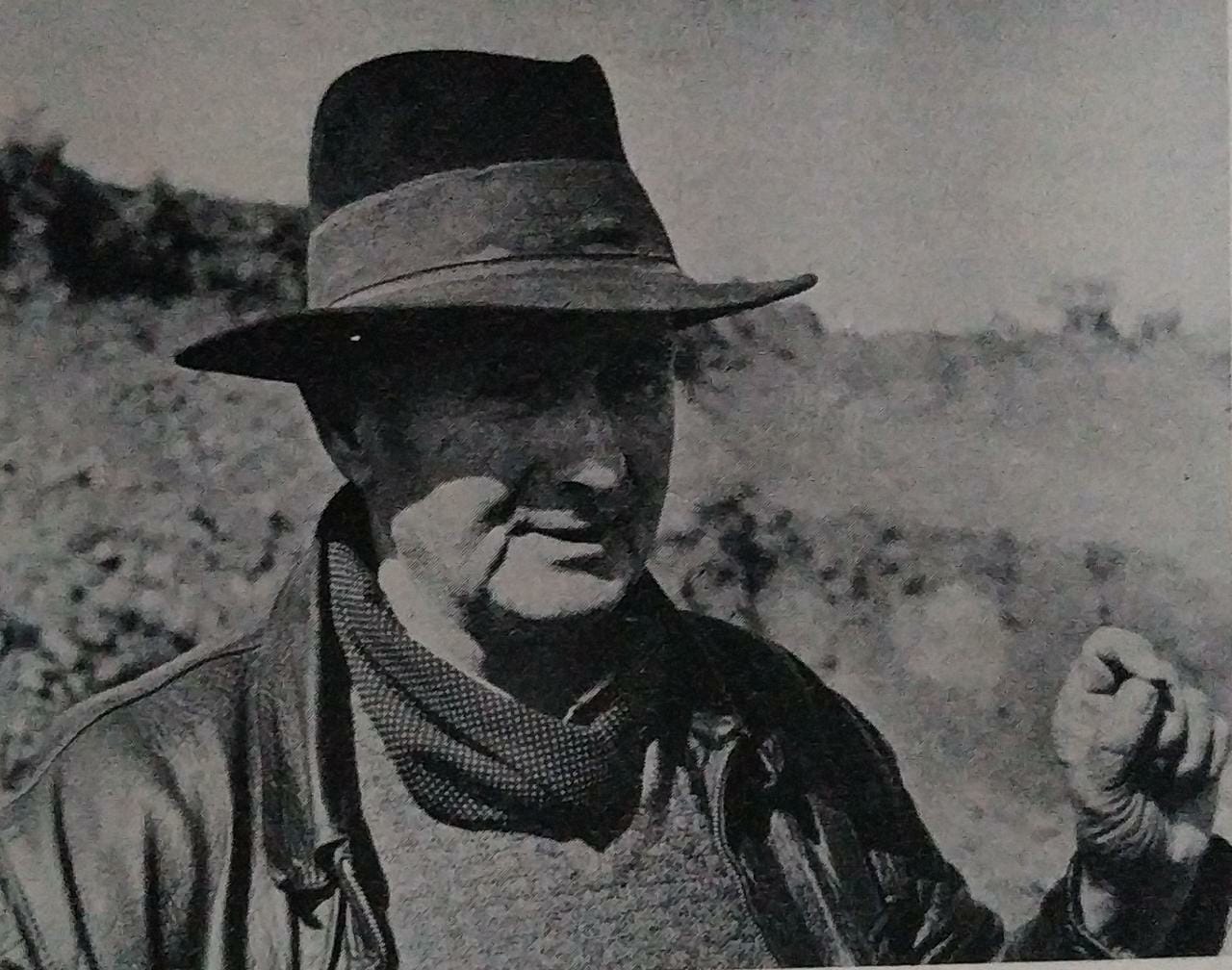The old-time prospector's favourite expression was, 'Gold is where you find it It was originally true, perhaps, of every mineral. Certainly, the first diamonds in any country were found by chance. Any discovery drew other seekers to the area. From this, a sound prospecting philosophy arose: work outwards from known mineral deposits. In India, Brazil, Russia, Africa, South America, Borneo, Australia, and other places where diamonds occur, someone originally picked up an unusual pebble that was subsequently identified as diamond - sometime later a rush began. Early finds were near the gravels of river beds, so prospectors naturally followed river banks and beds as they explored outwards from the original discovery.
Some of the earliest mining areas were probably wet diggings in the beds and banks of active rivers. Dry diggings were inland and often in semi-desert areas. It became apparent that these were the beds of rivers that had dried up thous. sands, or even millions of years ago. Although the gravel of the original find was probably exposed, prospectors naturally tried to discover the original course of the river, if it had become covered with rocks and soil, by sinking inspection pits.
It became evident during digging and recovery that diamonds were almost invariably accompanied by other heavy minerals, including garnets, ilmenites, zircons, and chrome diopsides. As the accompanying minerals were much more plentiful than diamonds, it was easier to search first for them. These red, green, and yellowish minerals are generally known as diamond indicators or indicator minerals. The Russians in recent times have named them sputniki, as they are little 'artificial satellites' to diamond deposits. A mine is, of course, a wasting asset. Any miner or mining company is anxious to stay in business. Prospecting therefore becomes inseparable from mining.
Traditional Prospecting
In the old days, the prospector was usually an independent adventurer who was looking for any kind of mineral that would be rewarding. With his pick and shovel strapped to a mule's pack, he could cover all kinds of terrain, but he depended upon diamonds and other minerals being on the surface or not very deep below it. After finding a deposit, he would work it out to raise money to set off on the next trip - if he did not make the fortune that was always waiting around the corner.
In the early diamond digging days of South Africa, it was common for several diggers to form themselves into a party with a single prospector to guide them. Very few indeed of these prospectors knew much about systematic prospecting, however, as even the source of diamonds was unknown. The discovery of kimberlite pipes bringing them from deep in the earth provided the prospector with a new objective, to find areas of kimberlite, which in its decomposed form on or near the surface, he could recognize. Yellow ground usually held more moisture than the surrounding sandy ground. Also it covered a roughly circular area which might be slightly above or below the level of the surrounding country. When a little lower, it sometimes to use the Boer name for a pond on a farm. Arcas of yellow ground that was small flat hills, perhaps only a few feet high, were known as kopjes, also in the Afrikaaner's tongue. Because of the higher moisture content of the yellow ground, there was sometimes more vegetation on a kopje of yellow ground than there was surrounding it, or on other kopjes.
There is an artificial obstacle today to prospecting in most countries where diamonds have been found. Either to do so is illegal and a right only of the state, or the prospector has to obtain a licence, which is not always readily granted. A. T. Fincham, who discovered a huge 44 acres (17.8 ha) pipe in the semi-desert. Postmasburg area is about 100 miles (160 km) northeast of Kimberley. He sold his rights in 1963 to De Beers for £2,250,000 and the diggings became the Finsch Mine, named after Fincham and his partner, E. Schwabel. 
Scientific Prospecting
Earlier in the century, especially where industrially significant minerals were being sought, geologists had taken a hand in prospecting decisions. They studied the nature of deposits, the geology of the area, and the mechanics of transportation. They tried to deduce the locations of original sources or to discover other areas where similar deposits might be found. This is a long way from the gold is where you find it' approach.
One of the geologists to apply such methods to diamond prospecting was Dr John T. Williamson, a Canadian who had worked on the Rand in South Africa for a time and became interested in diamonds. He theorized the location of the pipe from which alluvial diamonds in Tanganyika (now Tanzania, originated. After nine years of prospecting, he discovered it in 1942-3 ar Mwadui, about go miles (144 km) from Lake Victoria. The pipe was about four times bigger than the Premier Mine, near Pretoria, the biggest then known in Africa.
Modern Prospecting
Pack-saddle mules and donkeys are still used for prospecting by individuals and even larger concerns when they are the best way of covering the terrain. Since geologists have controlled the bigger prospecting operations, however, the pack animal has been superseded by the internal combustion engine and the lone prospector by teams of university-trained geologists as in the massive search mounted by the Russians to find pipes in Yakutia. De Beers have their own prospecting company for diamonds that operates in a number of countries where prospecting rights have been obtained and are considered worth exploiting. One country where the search is becoming more intense is Canada. Kimberlite has been found in a number of areas including Kirkland Lake in western Ontario, which seems most promising. Systematic prospecting is also being carried out in Australia. In 1968 De Beers Prospecting Unit was exceptionally successful when it located a number of new kimberlite pipes, some diamondiferous, in Botswana (formerly Bechuanaland) by scientific methods.
An operation like this starts at headquarters in Johannesburg, where a geological study is made of the country. The places where diamonds have already been found are plotted on a map. Attempts are made to correlate the finds in order to make an informed guess about the situation of major diamond deposits. It is decided for one reason or another to concentrate on certain areas and the logistics of the operation are planned. Although there is an apparent whimsicality in the distribution of all minerals, and of diamonds in particular, major diamond deposits seem to occur in areas remote from civilization. For desert areas, aircraft and desert vehicles are employed by the prospecting unit, using aerial photographs and geophysical detection devices.
